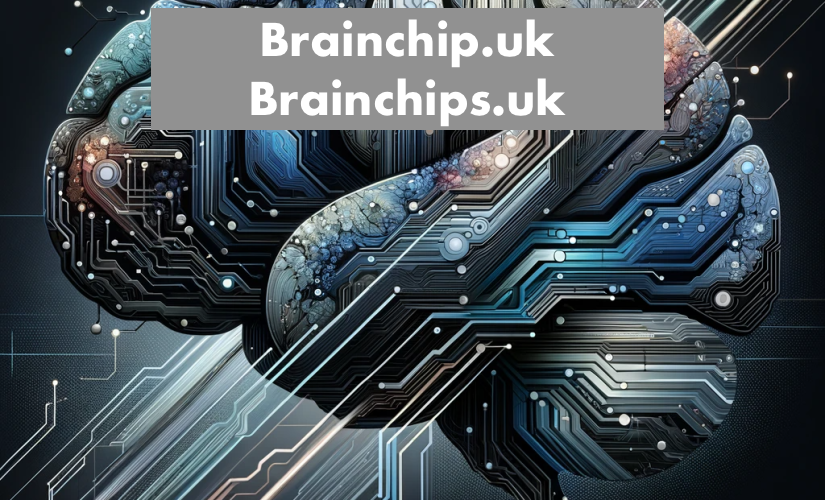
Exploring the Frontiers of Neuroscience Pave the Way for a Revolutionary Future
Neurolink, the brainchild of visionary entrepreneur Elon Musk, has captured the imagination of the world with its ambitious quest to merge the human brain with artificial intelligence. Central to this endeavor are the pioneering experiments conducted on monkeys and pigs, offering tantalizing glimpses into a future where the boundaries between mind and machine blur, and the possibilities for human enhancement seem limitless.
The foundation of Neurolink’s research lies in its exploration of brain-machine interfaces (BMIs), devices that enable direct communication between the brain and computers. By leveraging cutting-edge technology, including ultra-thin electrodes and advanced neural recording and stimulation techniques, the company aims to unlock the full potential of the human brain and revolutionize the way we interact with technology.
In recent years, Neurolink has garnered attention for its experiments involving non-human primates, specifically macaque monkeys. In one notable study, monkeys were trained to play a simple video game using only their thoughts, with electrodes implanted in their brains providing real-time feedback to a computer interface. The results were nothing short of astonishing, demonstrating the remarkable adaptability of the brain and the potential for seamless integration between biological and artificial systems.
Similarly, Neurolink’s experiments on pigs have offered valuable insights into the safety and efficacy of its brain implants. In a groundbreaking demonstration, pigs implanted with Neurolink devices showcased the ability to detect and transmit neural signals associated with various sensory experiences, ranging from touch to smell. This milestone not only underscored the versatility of Neurolink’s technology but also hinted at its potential to enhance sensory perception and cognition in humans.
Beyond the realm of scientific curiosity, Neurolink’s experiments hold profound implications for the future of humanity. Imagine a world where individuals with paralysis can regain mobility through thought-controlled prosthetics, where people with neurodegenerative diseases like Parkinson’s or Alzheimer’s can receive targeted stimulation to alleviate symptoms, or where individuals with sensory impairments can augment their perception of the world through digital enhancements.
The vision driving Neurolink extends far beyond mere technological innovation; it represents a fundamental reimagining of what it means to be human. By bridging the gap between biology and technology, the company seeks to empower individuals to transcend the limitations of their physical bodies and unlock new realms of cognitive potential.
Of course, the path to realizing this vision is fraught with challenges and ethical considerations. The prospect of directly interfacing with the human brain raises thorny questions about privacy, autonomy, and the potential for misuse or abuse of this technology. As Neurolink continues to push the boundaries of neuroscience, it must do so with careful deliberation and a steadfast commitment to ethical principles.
Despite these challenges, the promise of Neurolink’s technology is too tantalizing to ignore. With each passing experiment, the company moves closer to a future where the line between science fiction and reality blurs, and where the human mind becomes the ultimate frontier of exploration. Whether this future unfolds as a utopian dream or a dystopian nightmare remains to be seen, but one thing is certain: Neurolink’s journey is reshaping our understanding of what it means to be human, and the possibilities it holds are as awe-inspiring as they are profound.
Meet Noland Arbaugh: Neuralink’s First Human Trial Patient
In a groundbreaking leap forward in neurotechnology, Neuralink, the brain-computer interface company founded by Elon Musk, has initiated its first-ever human trial. At the center of this historic endeavor is Noland Arbaugh, a former athlete whose life took a dramatic turn eight years ago when a diving accident at a children’s camp left him paralyzed. Arbaugh’s journey from tragedy to hope embodies the promise of cutting-edge innovation in the field of neuroscience.
At the age of 29, Arbaugh has faced challenges that most can scarcely imagine. Once an active and vibrant individual with a passion for sports, his world changed irreversibly on that fateful day. Despite the devastating impact of his injury, Arbaugh’s spirit remained unbroken, and his resilience became an inspiration to many.
The decision to participate in Neuralink’s human trial was not one made lightly. For Arbaugh, it represented an opportunity not only to potentially regain control over his body but also to contribute to the advancement of science in a profound and meaningful way. His courage and determination underscore the importance of pushing the boundaries of what is possible in the realm of medical technology.
Neuralink’s ambitious goal is to develop implantable brain-machine interfaces that can enable individuals with neurological conditions to control computers and other devices directly with their thoughts. By bridging the gap between the human brain and artificial intelligence, the company aims to revolutionize communication, mobility, and quality of life for people like Arbaugh.
The procedure involved implanting a small device, known as the Neuralink implant, into Arbaugh’s brain. This device, equipped with ultra-thin electrodes, is designed to detect and stimulate neural activity with unprecedented precision. Through a wireless connection, the implant communicates with external devices, allowing for bidirectional communication between the brain and the digital world.
While the potential applications of Neuralink’s technology are vast, the primary focus of the initial trials is on restoring mobility and independence to individuals with paralysis. For Arbaugh, who has spent years adapting to life in a wheelchair, the prospect of regaining even a fraction of his former capabilities is nothing short of miraculous.
The road ahead is not without its challenges. Neuralink’s human trials represent uncharted territory, with countless complexities and uncertainties to navigate. Ethical considerations, safety concerns, and technical limitations all loom large as researchers strive to translate cutting-edge science into real-world solutions.
Yet, despite the inherent risks and uncertainties, Arbaugh remains undeterred. His participation in the trial is driven not only by personal ambition but also by a deep-seated belief in the transformative power of technology to change lives. By lending his voice to this pioneering endeavor, he hopes to pave the way for a future where disabilities need not define one’s destiny.
As Neuralink’s first human trial patient, Arbaugh finds himself at the forefront of a revolution in neurotechnology. His journey symbolizes the convergence of human ingenuity and indomitable spirit in the pursuit of a better tomorrow. While the road ahead may be long and arduous, Arbaugh’s unwavering resolve serves as a beacon of hope for countless individuals whose lives hang in the balance.
In the annals of scientific history, Noland Arbaugh’s name will forever be etched as the first-ever human trial patient—a trailblazer who dared to defy the limits of possibility and embrace the unknown. As Neuralink continues to push the boundaries of what is achievable, Arbaugh’s story will serve as a reminder of the boundless potential that lies within the human spirit. Citation: Who is Neuralink’s first ever human trial patient? Former athlete Noland Arbaugh, 29, was left paralyzed after a diving accident at a children’s camp eight years ago | Daily Mail Online
“Exploring Brain Interfaces: Neuralink and Neuroplasticity in Neuroscience”
Neuralink and neuroplasticity represent distinct yet interconnected aspects of neuroscience. Neuralink, pioneered by Elon Musk, focuses on developing advanced brain-machine interfaces (BMIs) that directly connect the human brain with external devices, aiming to augment cognitive abilities, restore lost functions, and even merge human intelligence with artificial intelligence. In contrast, neuroplasticity refers to the brain’s remarkable ability to reorganize and adapt its structure and function in response to experiences, learning, and environmental changes. While Neuralink harnesses technology to interface with the brain externally, neuroplasticity highlights the brain’s intrinsic capacity for self-repair and adaptation, offering insights into how the brain can naturally rewire itself to overcome challenges, recover from injuries, and optimize performance. Thus, while Neuralink seeks to enhance and augment brain function through external intervention, neuroplasticity underscores the inherent resilience and adaptability of the brain itself.
#neuralink #elonmusk #mindcontrol #neuroscience #neurotechnology #nolandarbaugh #paralysis #neuroplasticity #BMI #brainmachine #ai #augmentbrain #brainrepair #brainrewire #neurons #brainchipsuk

Andrew Jones is a seasoned journalist renowned for his expertise in current affairs, politics, economics and health reporting. With a career spanning over two decades, he has established himself as a trusted voice in the field, providing insightful analysis and thought-provoking commentary on some of the most pressing issues of our time.









